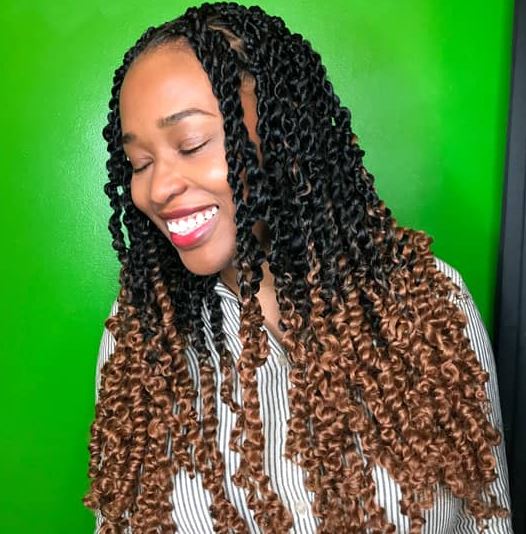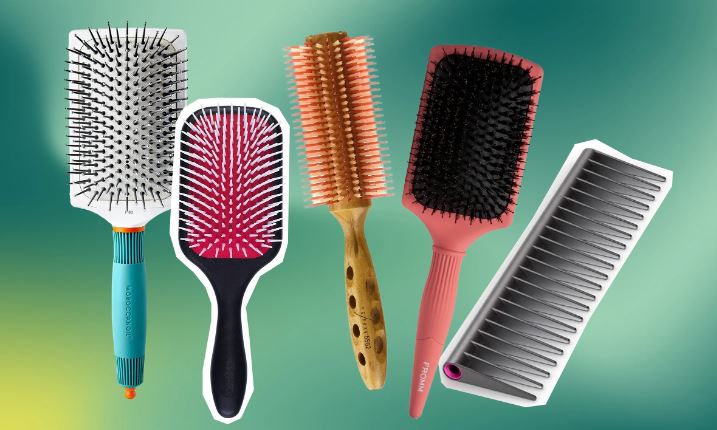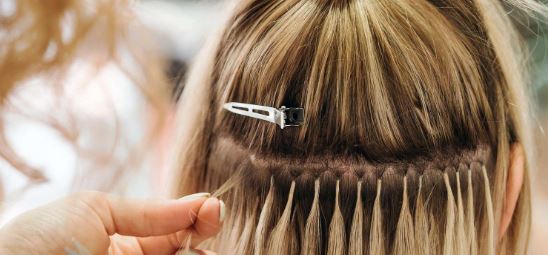Table of Contents
- 1 Introduction
- 2 Understanding Curly Hair Patterns
- 3 Type 2: Wavy Hair
- 4 Type 3: Curly Hair
- 5 Type 4: Coily Hair
- 6 Managing and Styling Different Curly Hair Types
- 7 Curly Hair Care Tips
- 8 Embracing Your Natural Curls
- 9 Styling Products for Curly Hair
- 10 Common Mistakes to Avoid
- 11 Conclusion
- 12 Frequently Asked Questions (FAQs)
Curly hair comes in a fascinating array of textures, patterns, and levels of bounce. Each type of curly hair has its unique characteristics, and understanding them can help you embrace and care for your curls better.
In this article, we’ll delve into the various types of curly hair, from loose waves to tight coils, providing insights into how to manage and style each type effectively.

Introduction
Curly hair is a beautiful and diverse hair type that is categorized into several patterns based on the shape and size of the curls.
These patterns range from loose waves to tight coils, and each type requires unique care and styling techniques.
Understanding Curly Hair Patterns
Curly hair patterns are commonly classified into three main types: Type 2 (Wavy), Type 3 (Curly), and Type 4 (Coily).
Within each type, there are further subcategories that help distinguish the variations in curl tightness and texture.
Type 2: Wavy Hair
Type 2 hair is characterized by its loose S-shaped waves that may have some light curl at the ends. It’s further divided into three subtypes:
2A: Fine Wavy Hair
This type features fine-textured waves that are gentle and relatively easy to manage. They often have a natural shine and are less prone to frizz.
2B: Medium Wavy Hair
Medium wavy hair has more distinct S-shaped waves and a bit more volume. It might require some styling to maintain its shape and control frizz.
2C: Coarse Wavy Hair
Coarse wavy hair has a more noticeable texture and can appear frizzy, especially in humid conditions. It requires extra moisture and care to maintain its vibrancy.
Type 3: Curly Hair
Type 3 hair forms well-defined curls that range from loose spirals to more compact ringlets. It’s divided into three subtypes:
3A: Slightly Curly Hair
3A hair has loose curls with a circumference similar to that of a piece of sidewalk chalk. It’s prone to frizz but can be managed with proper styling techniques.
3B: Springy Curls
Springy curls are tighter and spring-like in appearance. This type of hair can experience significant volume and may require more moisture to stay hydrated.
3C: Corkscrew Curls
Corkscrew curls are tightly packed and have a distinctive corkscrew shape. They tend to be more prone to dryness and require regular deep conditioning.
Type 4: Coily Hair
Type 4 hair features tight coils with a diverse range of textures. It’s divided into two subtypes:
4A: Tightly Coiled Hair
Tightly coiled hair has small, well-defined curls that are densely packed. It can appear fragile, so gentle care and proper detangling techniques are essential.
4B: Z-Shaped Coils
4B hair forms sharp angles and z-shaped coils. It may shrink significantly when dry and requires consistent moisturization to maintain its elasticity.
4C: Cramped Coils
Cramped coils have a dense zig-zag pattern with minimal curl definition. This type can experience shrinkage and requires thorough hydration and protection.
Managing and Styling Different Curly Hair Types
Each curly hair type has unique needs when it comes to managing and styling. It’s important to use products and techniques that enhance your hair’s natural pattern and minimize frizz.
Curly Hair Care Tips
- Use a sulfate-free shampoo and conditioner to retain natural oils.
- Incorporate a deep conditioning treatment regularly.
- Apply leave-in conditioners and styling products while hair is damp.
- Use a microfiber towel or cotton T-shirt to dry your hair gently.
Embracing Your Natural Curls
Embracing your natural curls is about understanding and loving your unique hair pattern. Experiment with different styles and products to find what works best for you.
Styling Products for Curly Hair
- Curl-enhancing creams and gels
- Diffusers for hair dryers to maintain curl shape
- Silk or satin pillowcases to prevent friction and frizz
Common Mistakes to Avoid
- Overwashing, which can strip natural oils.
- Using products with harsh chemicals.
- Brushing curly hair when dry.
- Applying too much heat without heat protectant.
Conclusion
In a world of diverse hair types, understanding the variations of curly hair is essential for proper care and styling.
Whether you have wavy, curly, or coily hair, embracing your natural texture and following the right techniques can lead to healthy and vibrant curls that showcase your unique beauty.
Frequently Asked Questions (FAQs)
Q1: Is it possible to change my hair’s natural curl pattern?
A1: While you can’t change your hair’s natural pattern permanently, certain styling techniques can temporarily alter the appearance of your curls.
Q2: How often should I wash my curly hair?
A2: Curly hair tends to be drier, so washing it 2-3 times a week or less can help retain its natural oils.
Q3: Can I brush my curly hair?
A3: It’s best to detangle curly hair with a wide-tooth comb or your fingers while it’s wet to prevent breakage.
Q4: What’s the importance of deep conditioning?
A4: Deep conditioning helps replenish moisture and nutrients, enhancing the health and appearance of your curls.
Q5: Are there specific hairstyles that work best for curly hair?
A5: Absolutely! Styles like braids, twists, and buns can protect your curls and showcase their beauty.




